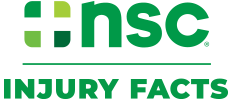Crash Responders Safety Week Starts Nov. 8 - How Telematics Can Help Increase Safety
 |
According to the National Safety Council the estimated number of motor-vehicle collisions is up 17% from 2019, and the annual crash rate for commercial fleets has risen 20%.
As we approach Crash Responder Safety Week, which is observed the week of Nov. 8 through Nov. 14, it is important to highlight the benefits telematics can have on road safety and emergency fleet management.
Ambulances, fire trucks, police cars, and other first-responders all rely on real-time data and GPS while responding to vehicle collisions.
Ensuring driver safety for crash responders is a key element to a fleet manager's job, but they cannot always be there to keep a watchful eye on all driver actions. A fully-featured telematics device can monitor a driver's speed, failure to wear a seatbelt, distracted driving, and many other harmful actions that can jeopardize the safety of a driver, an innocent person, or the roadways.
State Estimates: First six months of 2021
As shown on the map, motor-vehicle deaths in the first half of 2021 decreased in only six states:
- Maine (-22%, 15 fewer deaths)
- Kansas (-19%, 40 fewer deaths)
- Alaska (-8%, 2 fewer deaths)
- Rhode Island (-6%, 2 fewer deaths)
- Connecticut (-1%, 1 fewer death)
- Wisconsin (-1%, 2 fewer deaths)
Eight states experienced increases of 30% or more:
- South Dakota (+51%, 22 more deaths)
- Oregon (+51%, 88 more deaths)
- Minnesota (+41%, 61 more deaths)
- Idaho (+39%, 30 more deaths)
- Nevada (+38%, 50 more deaths)
- Utah (+36%, 40 more deaths)
- Vermont (+33%, 7 more deaths)
- Tennessee (+30%, 156 more deaths)
For detailed state level estimates, select Data Table.
- Chart
- Data Table
NSC preliminary motor vehicle fatality estimates do not include U.S. territories.
How NSC Calculates Crash Fatality Estimates
NSC collects preliminary motor-vehicle fatality estimates from data reporters in all 50 states and the District of Columbia. State data reporters generally work in state Department of Transportation offices and are often the same individuals responsible for providing data to the National Highway Traffic Safety Administration’s (NHTSA) Fatality Analysis Reporting System (FARS).
Each month, state data reporters provide a first estimate for the previous month’s fatalities and updated estimates for all previously reported months.
NSC maintains a three-year database of all state motor-vehicle fatality estimate reports. Using January as an example, the NSC database includes the January estimate first reported in February, as well as any updated January estimates reported in March, April, May, June, July, August, September, October, November, and December.
Fatality estimates tend to mature over the course of the year. Numbers often increase as fatalities are confirmed. Because of the maturation of the data, NSC calculates year-to-year percent change estimates by comparing monthly motor-vehicle estimates of comparable maturity.
Percent change estimates are multiplied by the most recently available final motor-vehicle fatality estimates reported by NCHS. Therefore, NSC estimates reflect the NCHS definition of motor-vehicle fatalities as both traffic and non-traffic deaths that occur within a year of the incident. Since NHTSA counts only traffic deaths that occur within 30 days of the incident, NSC national motor-vehicle fatality estimates are not comparable to NHTSA figures.
All state level data are displayed as reported by each state. All fatality estimates are preliminary. To ensure proper comparisons, 2020 state fatality estimates are preliminary figures covering the same reporting period as those for 2021. In other words, preliminary 2021 estimates are compared to preliminary 2020 and 2019 estimates, even if updated estimates are available.


